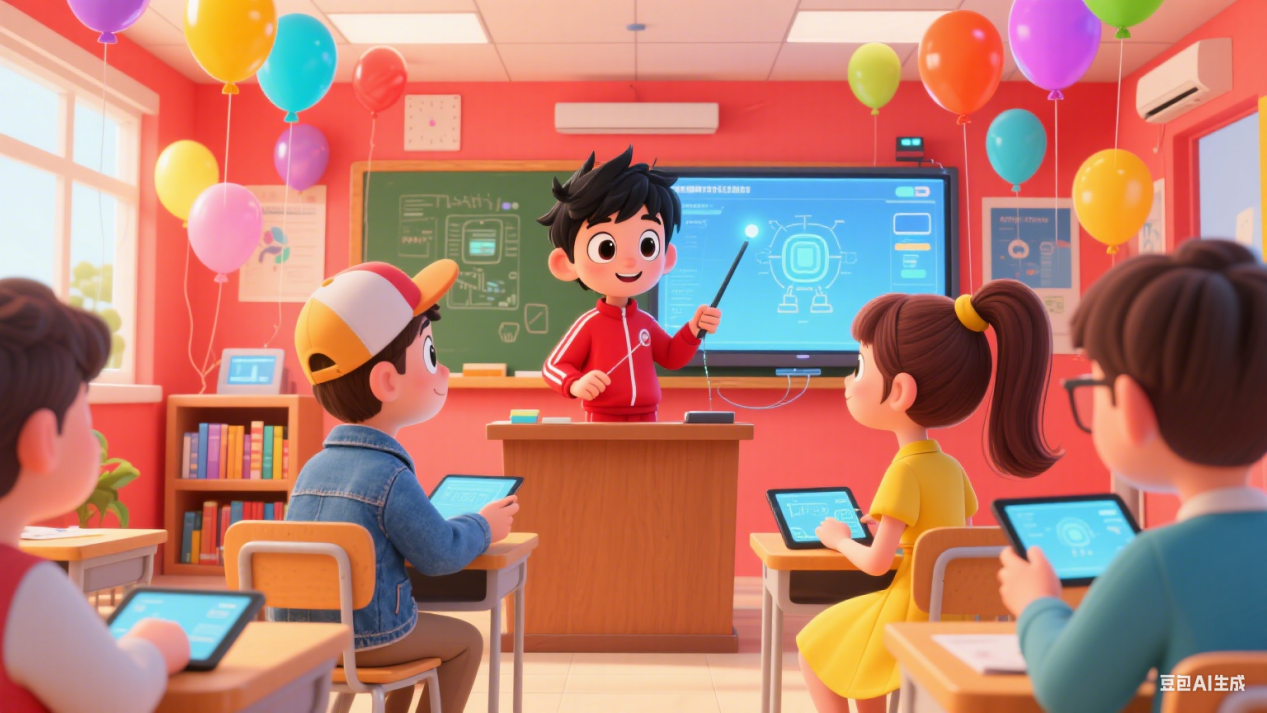
In recent years, many Chinese cities, including Beijing, Guangzhou, and Chengdu, have begun planning to teach artificial intelligence (AI) in primary and secondary schools. These cities have made detailed plans to ensure students will learn about AI at different school stages.
Starting this fall, Beijing’s primary and secondary schools will offer at least eight AI class hours every year. Schools will be able to teach AI as a separate subject or combine (结合) it with other courses like information technology and science. They’ll cover the following key areas: basic AI concepts, real-world uses, technical methods, and ethics and society. Teacher Zhan from Chaoyang District noted that besides adding AI courses, teachers will also be able to use AI tools in class, such as applying AI to provide real-time feedback.
In Guangdong Province, different learning goals will be set for each school stage. For example, primary school students will learn basic AI ideas through fun activities. Junior high students will study how data, algorithms (算法), and computing power work together. High school students will focus on deeper machine learning concepts and AI trends. All students will also learn to use data tools and understand key AI technologies.
A high school in Chengdu is working with universities and companies to develop special STEM courses like robotics, computer science, math modeling, chemistry and materials, and future cities. Students will be encouraged to plan future careers based on their interests.
To evaluate students’ AI learning, schools will use tests, project exhibitions, and debates. Digital learning records will track progress. More AI labs will be built, leveraging (最优化使用) local tech resources to provide hands-on experience. With these efforts, Chinese students are expected to gain valuable AI knowledge and skills.
原创编写 版权所有 侵权必究! 每日更新 个性化阅读 英语飙升!
1.1. When will Beijing launch AI education programs in schools?
A This winter.
B This fall.
C Next year.
D Next month.
解析:选B。B 细节理解题。根据第二段首句“Starting this fall, Beijing’s primary and secondary schools will offer at least eight AI class hours every year.”可知,北京将从今年秋季开始在中小学开设人工智能课程。故选B。
2.2. What can we infer about AI courses in Beijing?
A They are only for high school students.
B They must be taught as a separate subject.
C They cover several key aspects of AI.
D Students have 12 class hours per year.
解析:选C。C推理判断题。文章第二段提到北京的AI课程将覆盖 “basic AI concepts, real-world uses, technical methods, and ethics and society”四个关键领域,对应选项C “覆盖AI 的多个关键方面”。故选C。
3.3. What is the main idea of the third paragraph?
A How Guangdong designs AI classes for students.
B Why high school students learn machine learning.
C Popular STEM courses in Guangdong.
D When primary students start AI classes.
解析:选A。A段落大意题。第三段首句指出广东省为不同学段设定了学习目标,随后分别说明小学生、初中生和高中生的学习内容,核心围绕“如何针对不同年龄段学生设计AI教育”。故选A。
4.4. What are students in a high school in Chengdu encouraged to do?
A To focus only on robotics courses.
B To decide their careers immediately.
C To ignore their personal interests.
D To explore careers based on what they like.
解析:选D。D 细节理解题。根据第四段末句“Students will be encouraged to plan future careers based on their interests.”可知,成都某高中鼓励学生基于兴趣规划自己的未来职业。故选D。
5.5. How can students get hands-on AI experience?
A By using AI labs.
B By online exams.
C By technology festivals.
D By free books.
解析:选A。A细节理解题。文章最后一段提到“More AI labs will be built, leveraging local tech resources to provide hands-on experience.”,即通过建设更多AI实验室让学生获得实践体验。故选A。
